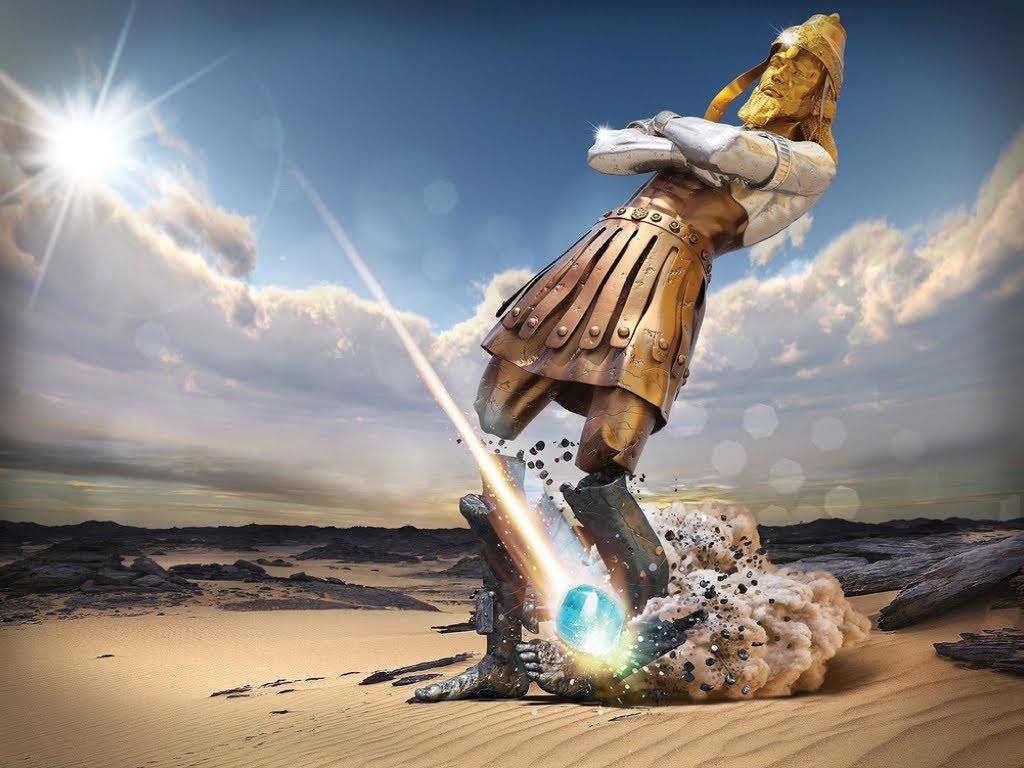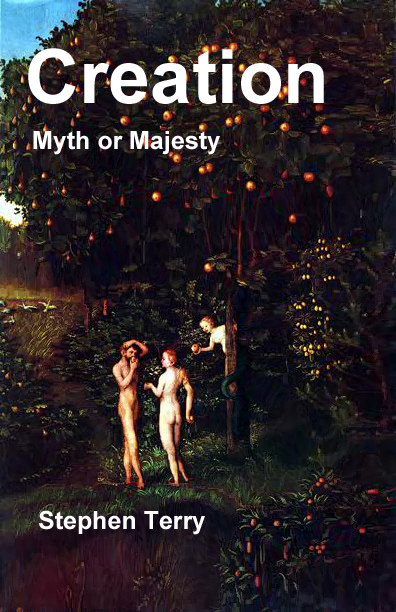
Stephen
Terry, Director

Daniel
and the End Time
Commentary
for the April 14, 2018 Sabbath School Lesson
 “In
the time of those kings, the God of heaven will set up a kingdom that will
never be destroyed, nor will it be left to another people. It will crush all
those kingdoms and bring them to an end, but it will itself endure forever.” Daniel
2:44, NIV
“In
the time of those kings, the God of heaven will set up a kingdom that will
never be destroyed, nor will it be left to another people. It will crush all
those kingdoms and bring them to an end, but it will itself endure forever.” Daniel
2:44, NIV
Our lesson this week looks at the past in order to focus
on the future. In particular, we look at the life of Daniel in the 6th
Century, BCE. Much of Israel had been carried away into captivity by the
Assyrians and the lone kingdom of Judah was struggling along, vacillating
between examples set by good kings such as Hezekiah and Josiah and those who
followed the bad behavior that caused the Northern Kingdom to fall to the
Assyrian onslaught. Because we live in similar times today where we also
struggle between a selfish hedonism and the alternative biblical call to
selfless service to others, we find much to identify with in Daniel. But in
turning to Daniel, we need to be careful of the pitfalls that have
unfortunately colored so much of how we see the Bible and the people and times
represented there. Just as we have so often portrayed the Semitic Jesus as a
white-skinned, handsome, Aryan nobleman, we have done the same with Daniel and
his three friends, Shadrach, Meshach and Abednego. It further complicates the
issue when we impose a Horatio Alger like myth of rags-to-riches on the lads.
But these boys were not some forlorn captives dragged in chains to a live of
penal servitude or slavery in a hostile land.
Commonly, throughout much of history, vassal kings would
provide noble hostages, often of royal lineage to their overlords as a guarantee
of faithful service. In the case of Daniel and his friends, King Jehoiakim was
the vassal king and Nebuchadnezzar was his overlord. As noble hostages, these
young men would have been afforded every opportunity extended to noble youth in
the Babylonian Empire. Likely for this reason, the doors to a Babylonian
education were opened to them. Understanding well the privileges of their
status they were willing to take advantage of that opportunity. The only thing
that stood in the way was their faithfulness to their Jewish religion. This is
an area where Seventh-day Adventists are often guilty of imposing an unrelated
dogma on the text that they might proof text support for that belief. However,
upon careful examination, it does not fly.
A part of Daniel’s Jewish faith was a set of dietary laws. Among those laws
were rules regarding clean and unclean meats, as well as rules on blood and
combining dairy with meat. In order to avoid violating those, he and his friends
requested they be fed a diet of vegetables. This was probably not because he
was advocating that a vegetarian diet was superior to one containing meat. If
that were the case, then Jesus, who referred to Daniel, would likely have been
vegetarian. But we know that Jesus and Daniel as well were not vegetarians, because
as faithful Jews, they would have observed Passover when possible. Daniel’s
purpose in requesting vegetables may have been seen as a simpler solution than
trying to train the royal kitchens to produce a kosher meal. Even meat-eating
Adventists will often do the same when traveling by plane and ordering a meal.
Rather than try to sort out the issue of clean and unclean meats, they simply
tell the airline to provide them with a vegetarian meal, even though they are
not vegetarian. Unfortunately, some who would try to use this passage to proof
text vegetarianism have even gone so far as to make vegetarianism a key point
of salvation, even maintaining that those who are not vegetarian will not be allowed
to be translated without seeing death at the Parousia. Nowhere in the Bible
does it say such a thing. One would think that if that were true then Jesus,
after the resurrection, would no longer be eating meat. Yet, He participated in
a non-vegetarian meal at least twice, once on the beach with the disciples,[i] and also in Jerusalem.[ii] It does not appear that
eating meat had any effect on His ability to ascend to heaven after doing so.
Perhaps faithfulness rather than vegetarianism was the point of the first
chapter of Daniel.
The famous dream of the statue in Daniel, chapter 2, has also apparently been
subject to some dogmatic filtering. For instance, some who did not seem to know
history well have stated that the belly and thighs of brass of the image equate
well with Greece who conquered others using armor and weapons of brass. They
also felt this meant that the iron legs had to represent Rome who were said to
have used the better armor and weapons of iron. These assertions were made in
the Encounter Bible Studies that were presented by DuKane film strip projection
machines in the 1970s and 1980s. However, the Iron Age began approximately at
the time of the Exodus, which far predates the empires symbolized in the
statue, so all of them would have had weapons and armor of iron, not just Rome.
When technology moved on beyond the DuKane projectors, those Encounter scripts
and lessons went out of print. Perhaps this is an example of when the rapid
advance of Bible study technology is a good thing.
Perhaps an even more significant imposition on the text
is the one which equates the stone that strikes the feet of the statue as the
Parousia. Coupled with that is the Eurocentric interpretation that forces the
ten toes to be interpreted as ten European Kingdoms. This is apparently an
attempt to create a parallel with symbology with ten items in later chapters of
Daniel. However, this may be as meaningful as finding a symbolic relationship
between the Ten Plagues visited upon Egypt and the Ten Commandments. These also
were written in the same book and had the same number of items. Could it be
that sometimes a human statue has ten toes simply because humans have ten toes?
In any event, it is hard to imagine such a significant image being all about
the Parousia and completely overlooking the Incarnation. This seems especially
odd when the stone represents the arrival of the Kingdom of God which Matthew,
the Gospel writer mentioned several times, not in relation to something future,
but being present because of the words of the incarnate Jesus. It also seems
strange that the statue would end with Rome when the British Empire lasted
significantly longer than the Babylonian Empire and exercised dominion over a
fifth of the Earth’s population. Perhaps this and other empires were not
included because this was about the Incarnation during Rome’s rule and not
about the Parousia.
If we identify the stone as referring to the incarnation
of Jesus, we can see the pieces fall into place. We can then see the head as
Babylon, the chest as Medo-Persia, the belly and thighs as Greece and the legs
and feet as Rome. However, we have to look for an event that took place in Rome
that significantly weakened the empire before Jesus’ incarnation to make
everything fit. The most significant change that took place in the Roman Empire
near the birth of Jesus was the change from a Republic to an Empire. This fits.
Once Rome moved from being ruled by the people through the Roman Senate, it
became an empire ruled by the Caesar’s, some of whom were strong and some of
whom were weak. As various individuals with their armies vied for the throne,
the cohesiveness of the Empire suffered. The successors to Caesar Augustus
(Octavian) were at the worst inept individuals like the paranoid Tiberius and
the insane Caligula, or simply uninspiring but capable administrators like
Claudius. It was during this period that the kingdom of God began to be
proclaimed.[iii] This kingdom was a
kingdom cut out without hands as it is a spiritual kingdom.[iv] Christ himself, who
established the kingdom, used the imagery of the stone as well. “Jesus said to them, `Have you never read in
the Scriptures: The stone the builders rejected has become the cornerstone; the
Lord has done this, and it is marvelous in our eyes?’ Therefore I tell you that
the kingdom of God will be taken away from you and given to a people who will
produce its fruit. Anyone who falls on this stone will be broken to pieces;
anyone on whom it falls will be crushed.” Matthew 21:42-44, NIV
We so often want to take these early chapters of Daniel
and make them apocalyptic in nature. Perhaps this is because the Seventh-day
Adventist Church was born out of an apocalyptic disappointment in 1844. If a
mother loses a child through a traumatic event, everything she says, does or
thinks for the rest of her life will be seen through the filter of that trauma.
Maybe we are doing the same with the trauma of that 19th century experience.
In doing so, we may miss the beautiful fulfillment that came with the most
significant event in the entirety of Earth’s history, the birth of Jesus in a
Levantine backwater of the Roman Empire. As a result of that birth, over two
and a quarter billion people profess Christianity as of 2017.[v] Does this negate the
importance of the Second Coming and the End Times? No. But perhaps we can find
in Daniel a reminder of the importance of Jesus Christ in the present. If we
focus on the presence of the Kingdom of God now, the rest will take care of
itself. God will not abandon His kingdom. Let’s not act like He might toss us
to the curb over apocalyptic details. The only detail that truly matters is
Jesus and the gift of His grace on our behalf.
